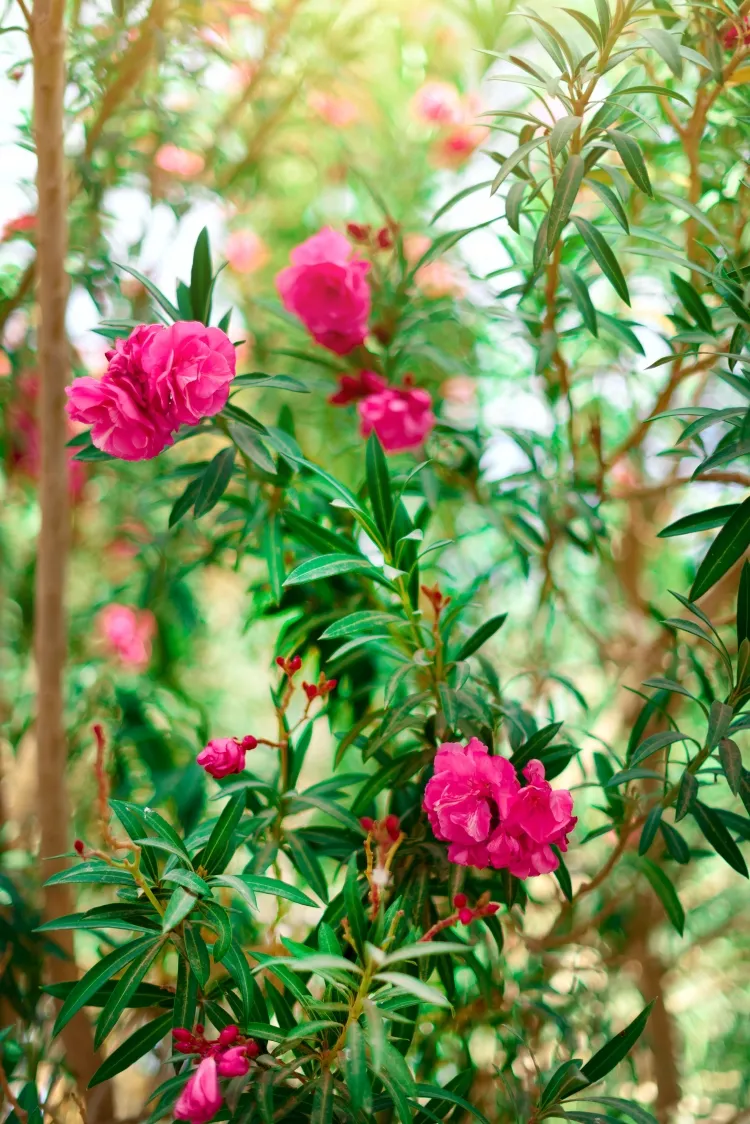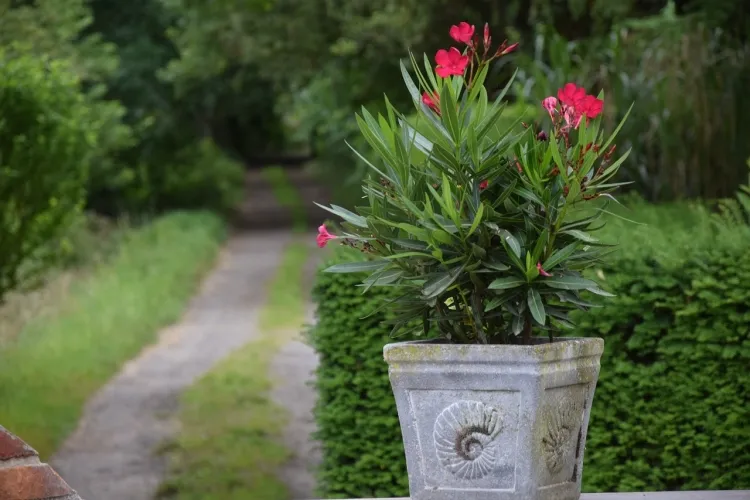It’s time to winterize your potted oleander! This process includes treating them against pests, checking the quality of the soil, and determining the watering intervals. Should you water oleander in pots over winter? What are the best conditions under which they will survive the cold? Let’s find out!
What Conditions Should Be Created for Oleander in Winter?
How to maintain an oleander in the winter? It’s a beautiful shrub that we often associate with the sea and hot, sunny weather. Knowing this it’s safe to assume that it’s not so winter-hardy as to tolerate frost and low temperatures without consequences. Oleander is an outdoor plant and in order to survive low temperatures it needs to be perfectly healthy, pest-free, and well-pruned. You have two options here – either move the pot to a sheltered area such as a garage, or a greenhouse, or leave it exactly where it is.
In the first case, you will deprive it of direct natural sunlight, but you will give it the necessary shelter and temperature. In the second scenario, you can cover it with a protective sheet. Here comes the next big question – should I water the potted oleander in the winter?
The good thing about putting a protective layer over your oleander is that it will prevent the cold from causing serious damage. The pot material is also of the utmost importance. A common choice is the classic terracotta containers. They not only add to the aesthetic appeal of your outdoor space but also have a porous structure which ensures good air circulation and drainage. On the other hand, while not as appealing, plastic pots are also a great choice as they are more resistant to low temperatures and frost.
In short, choose the placement of your oleander pots based on the weather conditions in your area.
How do I Know if an Oleander Needs Water?
It goes without saying that the pink blossoms of the oleander are a beautiful addition to your porch, patio, or terrace. However, during the summer and winter when it’s in full bloom, and after withering, it needs a little extra attention. During the hottest months, in order to prevent the yellowing and wilting of the flowers, you need to follow a proper watering schedule. This will require you to test the moisture of the soil every time before emptying the watering can. Keeping in mind the Mediterranean origin of the oleander, it will need a moderate amount of water every other day. The bottom 5cm should be dry. Whenever you feel that the soil is damp at the top, water the shrub less.
Should I Water Oleander in Pots Over Winter?
This is probably the first question that comes to your mind as the temperatures start to gradually drop. How should you care for your oleander, so it can get through the winter? Once it’s been pruned and treated for pests, what’s left to do is check the quality of the soil and fertilize if necessary. You will most likely have to do that as the plant has most definitely exhausted its reserves over the summer. That being said, once the plant has been overwintered, it goes into a dormant state, and it’s not recommended to add fertilizer.
The watering is reduced during this period. It’s important that you check the soil frequently. When you can feel that it’s dry within an inch or two of the pot rim, it’s time to water the plant. To make the measuring as easy and accurate as possible, you can buy a moisture meter. It’s incredibly practical for drought-resistant plants, as it can tell you exactly what the soil needs.
Make sure that the roots are slightly moist at all times, as the opposite will kill your oleander.
Precautions to Take After Overwintering Oleander
Congratulations! You’ve done everything right. Your plant is peacefully going to sleep, and under the proper conditions, it will bloom next season. That’s all great apart from one little drawback – its toxicity. If you choose to shelter it indoors it can pose a threat to yourself, your kids, and pets. This shrub contains a number of toxic compounds, the main one being oleandrin. This is an active ingredient in the composition of rat poison. You must be extra careful where you place the potted plant and do NOT forget to always wear gloves when handling it.
Composting oleander waste must be avoided at all costs!
Read also: When and How to Prune Oleander After Flowering? Tips & Advice for Care in Fall & Winter



